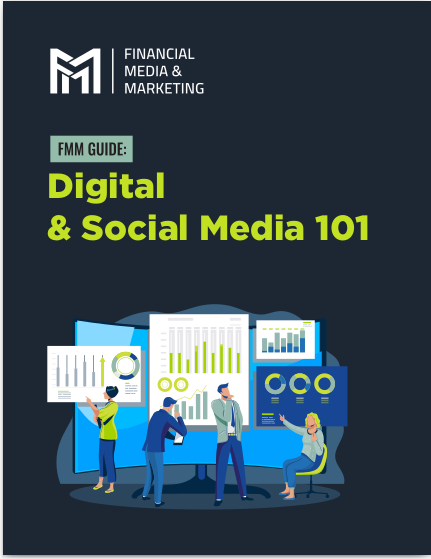Key Takeaways
- Effective newsletter design enhances readability and engagement, crucial for maintaining client interest.
- Utilizing well-crafted templates saves time and ensures a professional, consistent look.
Financial Advisor Newsletter: Ultimate Design and Template Tips
In the financial advisory sector, maintaining strong client relationships and keeping them engaged is paramount. One of the most effective tools for achieving this is a well-designed newsletter. A thoughtfully crafted newsletter can enhance communication, provide valuable insights, and keep your clients informed. Here are some ultimate design and template tips to elevate your financial advisor newsletters.
Understanding the Basics of Newsletter Design
Importance of Visual Appeal
Visual appeal is crucial in newsletters because it creates the first impression. When clients open your email, the design can either draw them in or turn them away. A visually appealing newsletter grabs attention, making it more likely that recipients will read the content. Clean, professional designs build credibility, whereas cluttered, unattractive layouts can undermine your message.
Key Elements of Effective Design
Effective newsletter design incorporates several key elements:
- Layout: A structured layout helps organize content logically, making it easy for readers to follow.
- Colors: A consistent color scheme that aligns with your brand enhances visual appeal and readability.
- Fonts: Choose legible fonts and maintain consistency throughout the newsletter.
- Images: High-quality images can break up text and add visual interest.
Each of these elements contributes to making your newsletter more engaging and easier to read.
Choosing the Right Template
Benefits of Using Templates
Templates offer numerous benefits for newsletter creation:
- Time-saving: Templates streamline the design process, allowing you to focus on content.
- Consistency: Using templates ensures that each newsletter maintains a consistent look and feel, reinforcing your brand identity.
- Professionalism: High-quality templates provide a polished, professional appearance.
Finding High-Quality Templates
There are many sources for high-quality newsletter templates, including online marketplaces and email marketing platforms. When selecting a template, consider the following criteria:
- Customizability: Ensure the template can be easily modified to fit your brand’s style.
- Responsiveness: Choose templates that look good on both desktop and mobile devices.
- Design Quality: Look for templates with clean, modern designs that will appeal to your audience.
Customizing Templates to Fit Your Brand
Customizing your template is essential for maintaining brand consistency. Incorporate your brand’s colors, fonts, and logos into the template. Personalize the design elements to reflect your brand’s unique style and tone. This not only strengthens your brand identity but also makes your newsletters instantly recognizable to your clients.
Designing for Readability and Engagement
Creating a Clear and Logical Layout
A clear and logical layout is fundamental to readability. Use headings and subheadings to break up content into manageable sections. Bullet points and numbered lists can make information easier to digest. Ensure that there is ample white space to prevent the newsletter from looking cluttered.
Choosing the Right Fonts and Colors
Fonts and colors play a significant role in the readability and visual appeal of your newsletter. Select fonts that are easy to read and avoid using too many different font styles. Stick to a consistent color scheme that aligns with your brand. Use contrasting colors to highlight important information and make text stand out.
Incorporating Images and Graphics
Images and graphics can enhance the visual appeal of your newsletter and make it more engaging. Use high-quality images that are relevant to the content. Infographics and charts can help explain complex information in a more digestible format. Ensure that images are optimized for fast loading times to avoid frustrating your readers.
Crafting Compelling Content
Writing Engaging Headlines and Subject Lines
The headline and subject line are the first things your readers will see. Crafting engaging and relevant headlines is crucial for capturing their attention. Use clear, concise language and highlight the value or benefit of reading the content. A compelling subject line increases the likelihood that your email will be opened.
Tailoring Content to Your Audience
Understanding your audience’s needs and interests is key to creating content that resonates. Segment your audience based on factors such as age, income level, and financial goals. Create targeted content for each segment to ensure relevance. For example, retirees might be interested in estate planning, while younger clients might focus on investment strategies.
Including Calls-to-Action
Calls-to-action (CTAs) guide your readers on what to do next. Whether it’s scheduling a consultation, downloading a resource, or reading a blog post, effective CTAs drive engagement. Make your CTAs clear, compelling, and easy to follow. Place them strategically within the newsletter to maximize their impact.
Testing and Refining Your Newsletter
A/B Testing for Optimization
A/B testing involves sending two versions of your newsletter to different segments of your audience to see which performs better. Test elements such as subject lines, layouts, and CTAs. Analyzing the results helps you understand what resonates with your audience and optimize your newsletter for better performance.
Gathering and Analyzing Feedback
Client feedback is invaluable for improving your newsletters. Encourage clients to provide feedback on the content and design. Use surveys, direct emails, or feedback forms to gather insights. Analyzing this feedback helps you identify areas for improvement and understand your clients’ preferences.
Making Data-Driven Adjustments
Use data from engagement metrics and client feedback to refine your newsletter. Look at open rates, click-through rates, and conversion rates to gauge what’s working. Make adjustments based on these insights to continually improve your newsletter’s effectiveness.
Best Practices for Continuous Improvement
Staying Updated with Design Trends
Keeping up with current design trends ensures that your newsletters remain fresh and appealing. Follow industry blogs, attend webinars, and review competitor newsletters to stay informed about new trends and technologies. Incorporate relevant trends into your design to keep your newsletters modern and engaging.
Regularly Reviewing and Updating Templates
Periodically review your templates to ensure they remain effective and aligned with your brand. Update them to reflect any changes in your branding or new design trends. Regular updates prevent your newsletters from becoming outdated and keep your content visually appealing.
Maintaining Consistency in Branding
Consistency in branding across all communications reinforces your brand identity. Ensure that your newsletters align with your overall brand style and tone. This includes using the same fonts, colors, logos, and messaging. Consistent branding helps build trust and recognition among your clients.
Wrapping It Up
Creating effective financial advisor newsletters involves a combination of good design and compelling content. By understanding the basics of newsletter design, choosing the right templates, and continuously refining your approach, you can create newsletters that engage and inform your clients. Implement these tips to enhance your newsletters and strengthen your client relationships.
Contact Information:
Email: [email protected]
Phone: 1949245898
Bio:
Madison Browning holds a Bachelor of Science in Business Management and has extensive experience in leadership roles within notable companies. Currently, Madison serves as a marketing specialist for Financial Media Marketing. With a keen eye for design and a passion for storytelling, Madison is also an avid graphic designer and content writer, consistently delivering compelling and visually appealing content.










